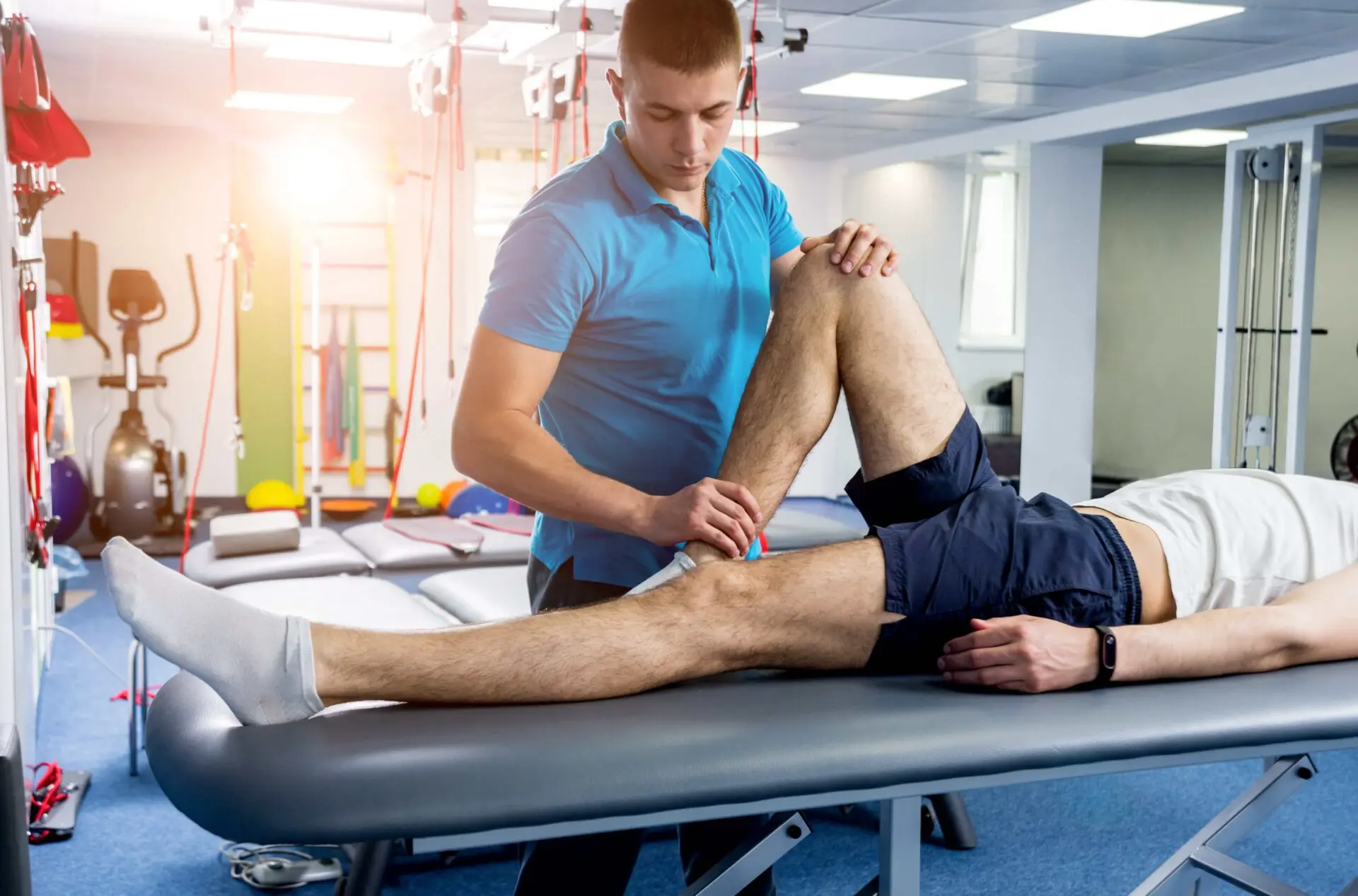Fear & Avoidance: Friend or Foe Post ACL Reconstruction?
Having recently undergone ACL reconstruction, I've been applying everything my OT brain knows about mobility, neuromuscular re-education, energy conservation, graded exposure, and environmental adaptations. I've been mindful of caring for my nervous system, body, and brain as I navigate the inevitable emotional toll that comes with significant changes in function, affecting both my mood and cognitive flexibility.
As I ride this emotional rollercoaster, I've been pondering the literature on psychological factors that might influence my journey to returning to the Ultimate Frisbee field, which is my ultimate goal.
WHAT DID I FIND?
Well, as expected, the bulk of the literature suggests that kinesiophobia is prevalent, problematic, and needs to be addressed.
A 2023 Systematic Review by Mir et al. aimed to identify key variables that influence the degree of kinesiophobia following primary anterior cruciate ligament reconstruction (ACLR). The review included 26 studies with a total of 2,213 patients, with an average age of 27.6 years and an average follow-up time of 36.7 months post-surgery.
Key findings were that lower pre-operative activity levels, low self-efficacy, and being female were variables associated with greater levels of kinesiophobia. Higher levels of kinesiophobia were associated with higher levels of pain-related distress and lower levels of function post-operatively. The authors conclude that post-operatively kinesiophobia needs to be recognized and addressed in order to improve rehabilitation outcomes(Mir, 2023).
In 2018, Papadopolous et al., published a useful overview looking at the literature exploring the impact on fear-avoidance beliefs post ACL re-construction specifically as it related to the goal of returning to sport (often the primary reason that individuals elect to undergo surgical intervention). The authors report that despite return to sport being a common goal for ACL reconstruction, rates of return to sport post-operatively are only about 40-70%. They identify kinesiophobia as the primary limiting factor (Papadopolous et al., 2018).
The authors suggest that fear re-injury can result in individuals not returning to their pre-injury level of knee function and activity, abandoning competitive sports, or lowering activity levels, experiencing psychological distress or a lowered quality of life, and can lead to attention distractions during sports that can impact athletic performance (Papadopolous et al., 2018).
The authors recommend that in addition to neuromuscular training, fear should be reduced using Cognitive-Behavioural Therapy approaches, goal setting, Graded Exposure and social support (Papadopolous et al., 2018).
BUT WHAT ABOUT THE VERY REAL RISKS?
As I read through the literature reviewing the perils of kinesiophobia, in the back of my mind was the harsh reality that there is a very real and fairly high risk of re-injury when returning to sport post ACL reconstruction, especially sports like Ultimate Frisbee.
The articles very clearly positioned kinesiophobia as a pathology. A problem that needs to be recognized and solved in rehabilitation. But I was curious…
Might a lack of a bit of fear, a bit of avoidance and a healthy respect for the very real risks involved in diving back in also place someone at risk of re-injury?
Could there not be some value in nurturing a bit of fear and a bit of caution, particularly for someone like me who has historically not been very patient and a pro at ignoring my body and pushing through pain?
I found an interesting 2021 article by Piussi et al., exploring the psychological characteristics of those who experienced re-injury post ACL reconstruction.
This was a matched cohort study where data was collected from individuals who did experience an ACL re-rupture matched to data from a cohort of patients who did not sustain a reinjury 2 years following their reconstruction. The group’s data for quadriceps and hamstring strength and 3 hop tests and answers to standardized patient-reported outcomes (the Anterior Cruciate Ligament Return to Sport after Injury scale and a short version of the Knee Self-Efficacy Scale)
were assessed obtained and assessed from 10 weeks, 4 months, 8 months, and 12 months after their primary reconstruction (Piussi et al., 2021).
While there was not a significant difference in physiological measures of muscle functioning between the 2 groups, individuals who experienced an ACL re-rupture had what is often considered a “stronger” psychological profile. That is higher psychological readiness, greater self-efficacy, fewer negative emotions and a lower perception of risk to return to sports at 8 months and 12 months post-surgery was associated with elevated risk of re-injury within 2 years post-op(Piussi et al., 2021).
SO WHAT?
While this study was not without its limitations, it does point towards the need for a more nuanced approach towards fear-related beliefs and avoidance behaviors around return to sport post ACL reconstruction.
In rehabilitation, we tend to pinpoint fear as problem that we need to solve. Psychology clearly matters, but perhaps the missing link in the approach that rehabilitation professionals often take when trying to address psychology is giving consideration to an individual’s CONTEXT. Is the belief or behavior workable for this individual in this moment at this stage of recovery given their history, their goals, and their environment? We need to move beyond a black and white approach to psychological factors.
HOW CAN WE BE MORE FLEXIBLE? AN ARGUMENT FOR ACT!
We get curious!
Let’s get a lay of the land of the individual’s fears, coping strategies and how and why these may have developed for them.
FOR ME - “I might never feel ready or confident to get back on the field”; “I miss it and just want to get back to it”; “I might go back too soon, re-rupture and all of this work and waiting was for nothing.” “If I re-injure myself again, my Frisbee days are likely over.”
My Coping Behaviors - I initially minimized the injury and tried to play again. It didn’t go well. Historically, I have jumped back to sport prematurely post-injury resulting in a prolonged recovery. Currently I am working hard at my rehabilitation and seeing progress.
Let’s get curious about what makes this person them…what are their goals, values & what matters to them? Why do they want to return to their chosen sport? What about it is important to them?
FOR ME - I want to get back to Frisbee! I value the fun, the competition, the connection and social aspect, experiencing the mastery and satisfaction of performing skills well, the athleticism that I get to feel in my body
Let’s get curious about the function that those beliefs and coping strategies are serving for this person now? Is it helping them to move towards what matters to them or getting in the way?
FOR ME - A bit of fear seems much more workable than the absence of fear at this stage in my recovery. I do have some fears, but they feel like healthy and realistic caution. My fears and keeping me stuck, in fact they are driving me towards working hard at my physiological recovery. I acknowledge that this may look different as I progress through my recovery, but at this time my fears are workable.
This approach to the psychological factors that arise in rehabilitation come from an Acceptance and Commitment Therapy lens. With ACT, we have the freedom to let go of the perceived need to correct or change thinking or to decide for someone whether their fear is founded or a problem. Instead we are a guide, empowering our clients to explore and decide for themselves the workability of their beliefs as they progress through their recovery.
ACT also invites us to consider…Are there ways that I can experience the value that I gain from playing Ultimate Frisbee now, in my current context? A week before my surgery, I decided to go and watch my team play. I was surprised that I didn’t feel the grief and frustration that I had anticipated on the sidelines. I felt embraced by my team, I was able to offer observations and coaching, I enjoyed cheering them on and was able to experience the excitement of the competition as a spectator and team mate. While I can’t yet play, I still experienced so much of what I valued about Frisbee just by showing up.
Lara Desrosiers OT Reg. (Ont.)
Director & Occupational Therapy Educator
Join me to learn more about applying CBT and ACT concepts to your rehabilitation practice!
REFERENCES:
Markström JL, Grinberg A, Häger CK. Fear of Reinjury Following Anterior Cruciate Ligament
Reconstruction Is Manifested in Muscle Activation Patterns of Single-Leg Side-Hop Landings. Phys Ther. 2022 Feb 1;102(2):pzab218. doi: 10.1093/ptj/pzab218. PMID: 34554253; PMCID: PMC8860189.
Mir B, Vivekanantha P, Dhillon S, Cotnareanu O, Cohen D, Nagai K, de Sa D. Fear of reinjury
following primary anterior cruciate ligament reconstruction: a systematic review. Knee Surg Sports Traumatol Arthrosc. 2023 Jun;31(6):2299-2314. doi: 10.1007/s00167-022-07296-6. Epub 2022 Dec 23. PMID: 36562808.]
Papadopoulos, S. D., Tishukov, M., Stamou, K., Totlis, T., & Natsis, K. (2018). Fear of re-injury
following ACL reconstruction: an overview. Journal of Research and Practice on the Musculoskeletal System, 02(04), 124–130. https://doi.org/10.22540/jrpms-02-124
Piussi R, Beischer S, Thomeé R, Thomeé C, Sansone M, Samuelsson K, Hamrin Senorski E.
Greater Psychological Readiness to Return to Sport, as Well as Greater Present and Future Knee-Related Self-Efficacy, Can Increase the Risk for an Anterior Cruciate Ligament Re-Rupture: A Matched Cohort Study. Arthroscopy. 2022 Apr;38(4):1267-1276.e1. doi: 10.1016/j.arthro.2021.08.040. Epub 2021 Sep 25. PMID: 34571186.




